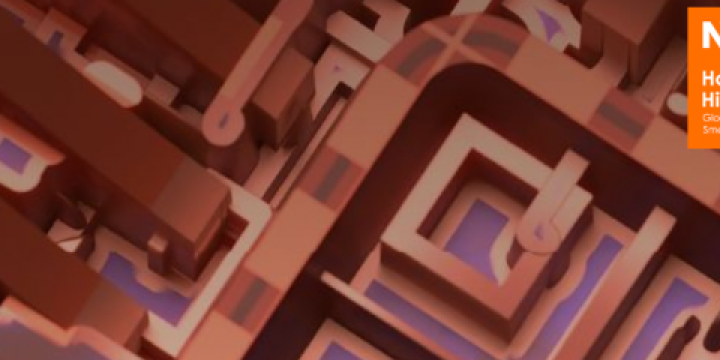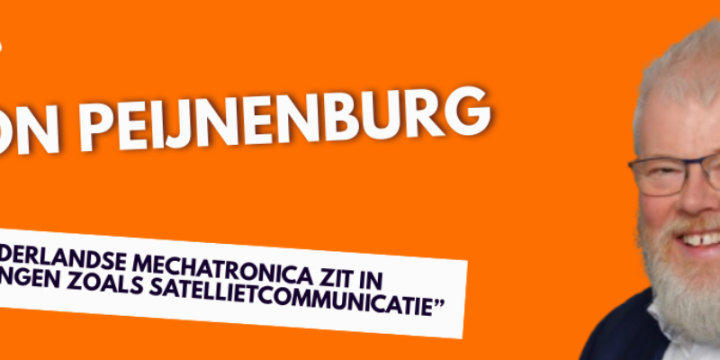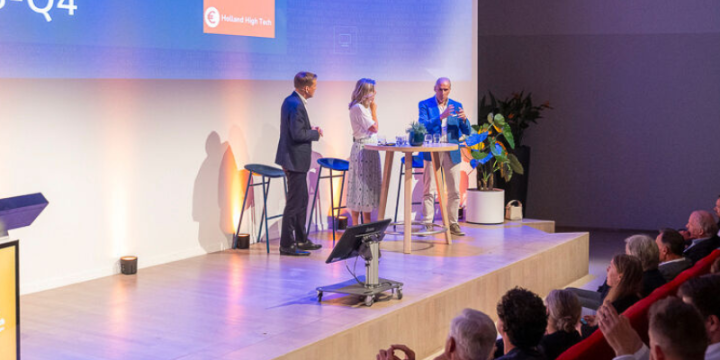As of January 1, 2025, Peter Stolk has been president of Holland High Tech (High Tech Systems and Materials). In this interview with ActusPaysBas, he discusses the strengths of the Dutch innovation model, opportunities for cooperation with France and Germany, and the importance of regional ecosystems in shaping Europe’s technological future. Special attention is given to Franco-Dutch collaboration, with a focus on semiconductors, photonics, quantum technologies, and the energy transition.
Mr. Stolk, what is your main message to French and German partners? What distinguishes the Dutch high-tech sector?
The Netherlands is a small country, yet it is very well connected. Companies, universities, and research institutes are located close to one another. The professional world is characterized by low hierarchy, marked by a culture of openness and mutual respect. Regardless of their role, people know each other and communicate easily, from engineers to executives.
Our high-tech sector benefits greatly from this. It is based on what we call the 'triple helix' model. In this model, industry, research, and government work closely together. This structure fosters targeted innovation, with concrete benefits for society and the economy. The government provides active support through specific subsidies in nine designated 'leading-edge' sectors, including high-tech systems and materials (HTSM).
An excellent example is ASML. A unique and dense network of suppliers, research institutes, and industrial partners, especially in the Eindhoven region, has enabled this company to develop such complex machines.
Where do you see opportunities to strengthen technological cooperation with France and Germany?
We have already established significant innovation pacts with both countries. With Germany, the focus is on supply chain resilience, CO₂ reduction, Industry 4.0, and sustainable mobility. With France, we also collaborate on sustainable mobility and energy. Franco-Dutch cooperation also targets key technologies such as semiconductors, photonics, quantum research, and the energy transition.
These topics are more relevant than ever. We live in a time of geopolitical tensions, technological dependencies, and a growing need for European sovereignty. Europe must become more independent in infrastructure, artificial intelligence, and energy technologies like hydrogen. Demographic factors such as the shortage of skilled labor further increase this pressure. France and the Netherlands are already collaborating to strengthen their security and autonomy through high technology. Think, for example, of quantum technologies within the framework of the Franco-Dutch innovation pact.
Technology is the key driver of transformation. The good news is that our countries fully trust each other. This is a solid foundation for strategic and deepened cooperation.
How do the Netherlands position themselves compared to France and Germany, two industrial giants?
France follows a vertical approach, characterized by structured systems and centralized funding policies. Germany stands out with its strong networks, especially in the automotive sector, and a process-oriented approach throughout the value chain.
The Netherlands take a different approach. We are not a country with large-scale mass industrial production. Our specialty is small-series production with high variety — that is, customized, often niche solutions. Therefore, we are an ideal complementary partner. We provide essential components or services without directly competing across the entire value chain.
What role do regional ecosystems like Brainport or the Twente region play in the Netherlands’ technological position in Europe?
In the Netherlands, regional innovation ecosystems play a key role. Holland High Tech sets the technological agenda at the national level, currently focused on ten key technologies. On the ground, regional development agencies contribute to implementation, such as the BOM agency in Brabant or OostNL in Twente.
Whether it’s quantum research in Delft or semiconductors in Eindhoven, each region brings specific strengths while aligning with the national strategy. This decentralization makes us agile and responsive. This is a model that could also inspire Europe.
What is the importance of participating in European consortia such as IPCEI or Horizon Europe?
European consortia are crucial because the Netherlands alone is too small to build complete technological value chains. That’s why we focus on 'control points': strategic segments where we can add real value.
These consortia allow us to contribute in a targeted way and strengthen autonomy, for ourselves and our European partners. Without them, we would be isolated. Cooperation at the European level is vital, especially in this time of global uncertainty marked by resource scarcity, trade conflicts, and technological dependencies.
How does the Dutch strategy lend itself specifically to cross-border cooperation in AI, photonics, or chips?
We see the greatest potential in emerging technologies such as integrated photonics, quantum technologies, and new energy materials. In these fields, early collaboration between research, startups, and industry across borders is essential.
While the semiconductor sector is already well established, these new fields offer Europe the chance to position itself as a leader. We must also act collectively in AI and cybersecurity, especially given geopolitical instability and the rise of cyber threats. In this regard, the recent 'Summit for Action on Artificial Intelligence' held in Paris could inspire European collaboration.
How can we ensure that Dutch innovations meet the needs of French and German industries?
Public-private partnerships must become the norm. Every funded project should include partners who also invest their own capital. This keeps research market-oriented and aligned with real demand.
Each year, our top sector channels about €50 million of public funds toward technological and societal challenges. The system is simple but effective because it bridges the gap between theory and practice while supporting innovation.
What are the main obstacles faced by Dutch high-tech companies in entering larger markets?
Large-scale production is one of the major challenges. Even though they excel technologically, Dutch companies generally remain modest in size. Entering markets such as France or Germany requires good knowledge of regulatory frameworks, tender procedures, and a lot of patience.
Moreover, the investment culture in the Netherlands is relatively risk-averse. Over 80% of startup funding comes from banks, which often avoid risk. As a result, many good ideas fail due to lack of early-stage growth capital. This is where we can learn from France and Germany, and from European initiatives aimed at supporting tech startups and scale-ups. For example, France invests integrally and heavily in deep-tech programs throughout the value chain: from initial innovation to industrialization.
Mr. Stolk, what role do you play in promoting high technology in the Netherlands?
I see myself as a bridge builder. My role is to make innovation visible—not only as a technological concept but as a mindset: open, collaborative, and solution-oriented. At the same time, I want to bring people and ideas together across borders. That’s how we create impact through innovation.
I contribute by providing strategic advice, public interventions, and clear communication. Europe’s strength lies in cooperation. And the Netherlands can be both a driver and a reliable partner in this process.





